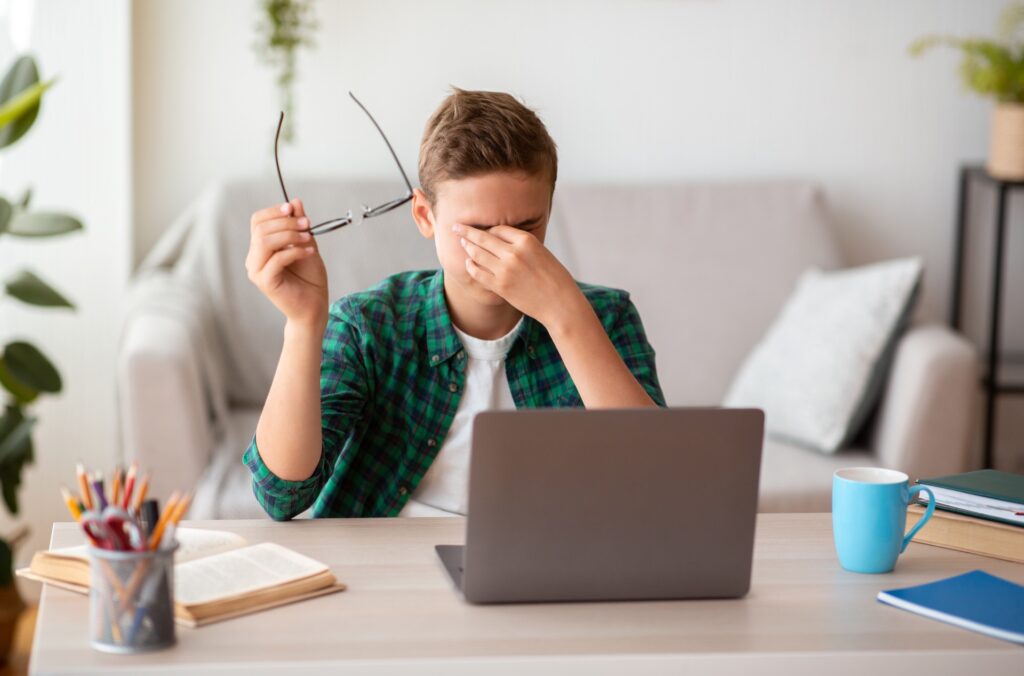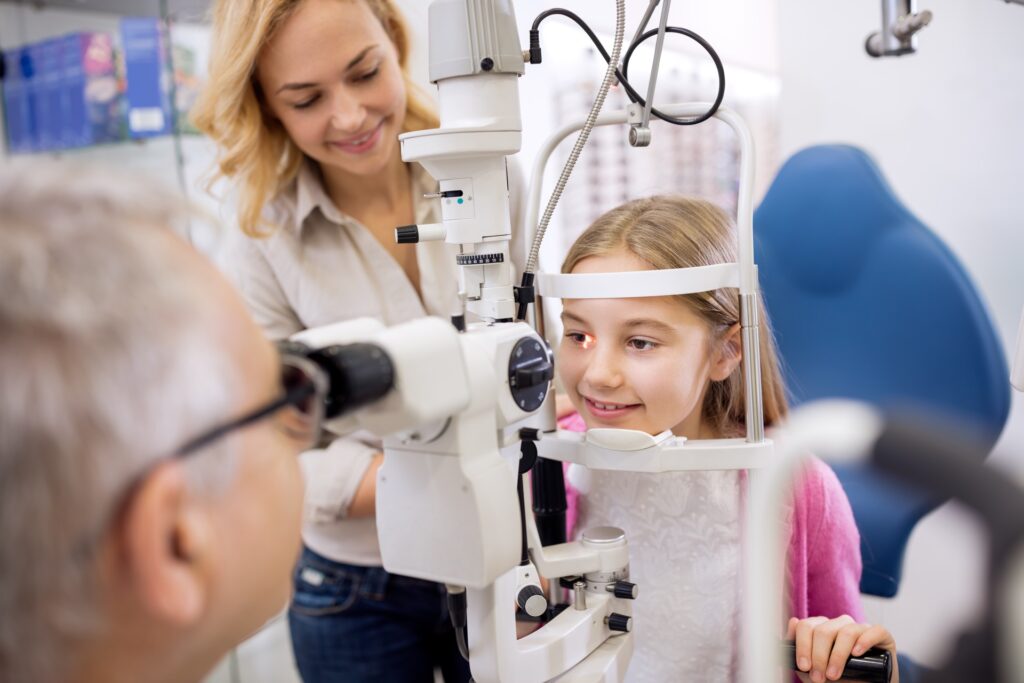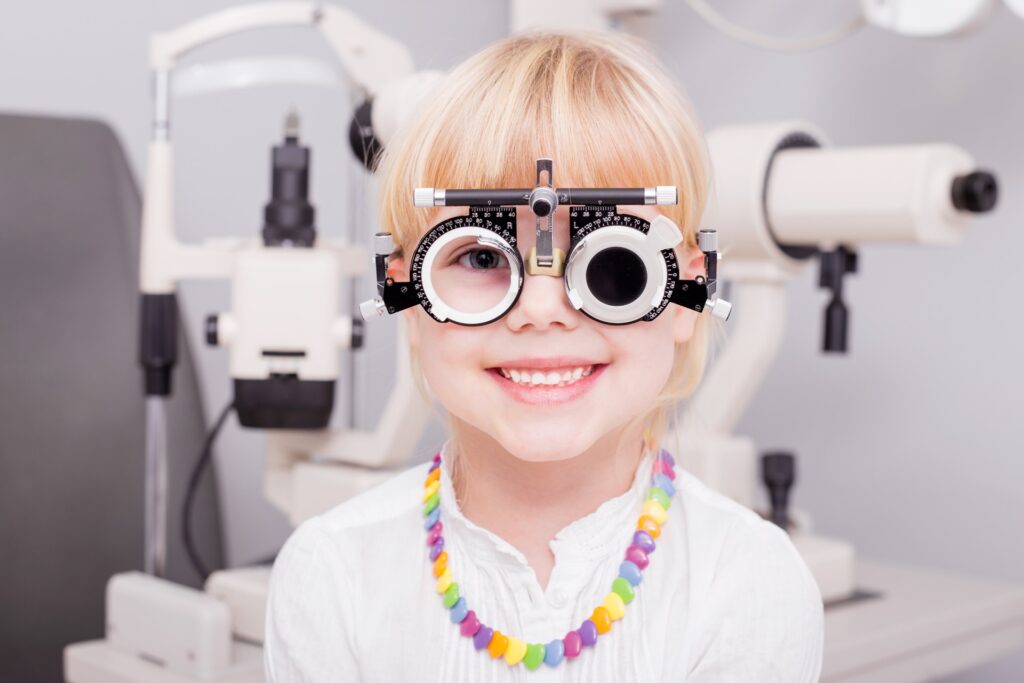Being able to clearly see the outside world without issue makes a huge difference in day-to-day life, that’s why it’s so important to be able to control progressive myopia in children before it becomes even more of an issue.
Myopia itself is often referred to as nearsightedness, i.e. the ability to only see objects close to you clearly while others in the distance appear blurry or fuzzy.
Some children who develop myopia (nearsightedness) have a continual progression of their myopia throughout the school years, including high school. And while the cost of annual eye exams and new glasses every year can be a financial strain for some families, the long-term risks associated with myopia progression can be even greater.
Why It’s Crucial to Control Progressive Myopia in Children
Myopia is one of the most common eye disorders in the world and the incidence of myopia is increasing worldwide. The prevalence of projected myopia in the future is estimated at 50% of the world’s population by 2050.
Mild myopia typically does not increase a person’s risk for eye health problems, but moderate and high myopia are associated with serious, vision-threatening side effects.
There is an increase in the risk of early cataracts, glaucoma, retinal detachment and blindness with high myopia. In fact, for every additional 1.00D increase in myopia, there is a 67% increase in the prevalence of myopic maculopathy. Myopic maculopathy is the most serious, irreversible, vision-threatening complication of myopia and a leading cause of blindness.
Lower myopia means that there’s less visual disability when not wearing glasses. Plus, there are also better options and outcomes from surgical procedures to get rid of glasses (for example, LASIK) if the prescription is lower.
Progression is faster in younger children, those of East Asian descent (50% faster), and those with a parental history of myopia. However, nearly all young myopes progress, which is why it’s so important to manage and treat them, regardless of their estimated progression rate.
Myopia Treatment Options
Outdoor Light
Studies show that outdoor light exposure stimulates the release of dopamine which delays the onset of myopia and may slow progression. 90 minutes minimum per day is recommended. It’s also okay to wear sunglasses and/or a hat and still get the benefits.
Reduced Near Work/Screen Time
More time spent on near-work activities is associated with a greater likelihood of myopia. Reducing screen time as much as possible can help reduce the chance of myopia developing or progressing.
Using Myopia Control Glasses
The Hoya MiyoSmart is a set of special glasses that can help control myopia.
- Effectivity: 59% treatment effect.
- Required wear time: Full-time wear recommended.
- Risks/Adverse events: No adverse events have been reported and both visual performance and level of symptoms are relatively equal to a “normal” lens.
- Rebound: None known.
NOTE: There are currently other designs of myopia control glasses available at a lower cost, but the treatment effect can be as low as 11% which is clinically insignificant.
Myopia Control Contact Lenses
We recommend choosing from any of the three following contact lenses:
- CooperVision MiSight Dailies (daily replacement)
- Acuvue Oasys for Presbyopia (biweekly replacement)
- CooperVision Biofinity Multifocal (monthly replacement)
Each are a peripheral defocus contact lenses designed to help treat myopia specifically.
- Effectivity: 59% treatment effect.
- Required wear time: 10h/day, 6d/week.
- Risks/Adverse events: It is normal for children to initially complain of “ghosting” in their vision with these types of contact lenses, but this effect becomes less noticeable over time. Risks include all risks of wearing contact lenses including, but not limited to, corneal ulceration and blindness. The risks are significantly lower with daily replacement contact lenses.
- Rebound: None known, but there was no acceleration in prescription in the first year after discontinuation.
Prescription Eyedrops
These prescription eyedrops contain 0.01% of Atropine and are instilled in both eyes daily, before bed, for two years. Often the best results happen in the second year. Follow-ups are scheduled at six-month intervals and typically, after two years of treatment, the atropine will be discontinued for six months, and then restarted if necessary.
- Effectivity: 64% treatment effect
- Risks/Adverse events: Possible side effects include light sensitivity (may require transitions lenses for comfort) and decreased clarity when doing near work (which would require progressive glasses).
- Rebound: It is possible for there to be a rebound effect after discontinuation of the drops where the prescription increases. Tapering the drops at the end of treatment may be helpful, but more studies are required.
Orthokeratology (Ortho-K)
This is the use of specially designed and fitted hard contact lenses while sleeping to temporarily reshape the cornea. The lenses are specifically worn overnight and not during the day. However, Orthokeratology is not currently offered in Kelowna.
- Effectivity: 45% treatment effect.
- Risks/adverse events: Infections, corneal scarring and the risks associated with contact lens wear.
- Rebound: Limited data available.
When Does Myopia Stabilize?
Given that 50% of myopes continue to progress beyond the age of 15 years and 25% beyond 18 years, it’s best to keep teenagers from discontinuing treatment until older. Assuming the myopia control is effective, it should be continued if the benefits outweigh the potential risks or additional costs associated with treatment.



